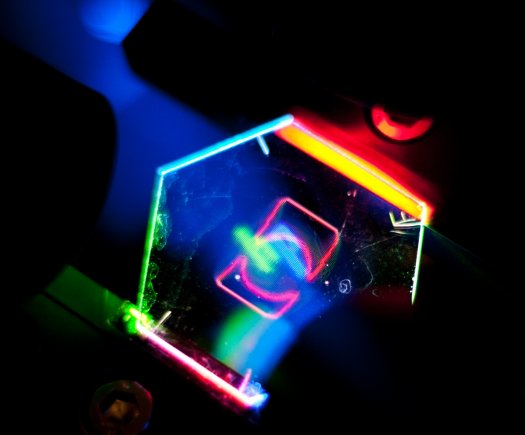 NEWS
NEWS
 NEWS
NEWS
 NEWS
NEWS
![]() It’ll probably be some time before we see mobile devices with 3D displays hitting the shops, but at least we’ve been allowed a glimpse of what the future holds in store for us. According to a report in the scientific journal Nature, researchers at HP Labs have just developed a new display technology capable of delivering ‘seamless’ 3D images that could eventually be fitted to smartphones, tablets and other mobile devices.
It’ll probably be some time before we see mobile devices with 3D displays hitting the shops, but at least we’ve been allowed a glimpse of what the future holds in store for us. According to a report in the scientific journal Nature, researchers at HP Labs have just developed a new display technology capable of delivering ‘seamless’ 3D images that could eventually be fitted to smartphones, tablets and other mobile devices.
Speaking to reporters earlier today, HP Labs physicist David Fattal described how the technology works:
“You actually see the object extruded one centimeter either in front of, or underneath the display. You can even tilt the display to any degree you like, and see the displayed object from different angles.”
The objects in question were an animated HP logo, a psychedelic rainbow-colored turtle, and some multi-colored flowers and stars. The animations were delivered at a rate of 30 frames a second, the same as on standard TV screens.
3D TV displays have been around for a while of course, but up until no one has come up with anything good enough to allow us to throw away those annoying glasses that are needed to appreciate the effect. This is the main problem with 3D TV, because wearing chunky glasses in the home just isn’t cool, and as for pairing them with mobile devices… Forget it.
Creating convincing 3D images without glasses represents a massive engineering challenge though, as in order to do so it’s necessary to recreate something known as the “parallax” effect. Basically, our eyes see two different images at the same time, and these are ‘knitted’ together by our brains to form a single, coherent 3D picture that we see in ‘real-life’. In order to replicate this and create 3D displays, it’s necessary to come up with pixels that project two slightly different images onto each eye, just as we see things in real life.
To overcome this, HP Labs team has designed an array of new optical elements called diffraction gratings that essentially are able to control the direction of light emitted from display pixels, sending it out in a precise direction rather than all directions like standard LCD pixels do. The light is directed in such a way that anyone looking at the screen will see slightly different images with their right and left eyes, tricking them into thinking they’re seeing the image in 3D. In addition, it has the effect of allowing people to see objects on screen at different angles – for example, a viewer looking at HP’s turtle can walk around to view it from the front, back or sides.
If it all sounds pretty technical, that’s precisely because it is. Even so, researchers were able to create 3D images that can be seen from 14 different angles. With more work, they hope to create a total of 64 different viewing angles, which would allow for a totally seamless 3D experience.
Unfortunately, HP says that we’re unlikely to see the technology being integrated with any of its products soon. Ray Beausoleil, director of photonics research at HP Labs, says that it would take a significant amount of investment to make the technology practical for tablet devices, something that HP doesn’t seem too interested in pursuing right now:
“The point of this research is just to show that there is an approach to 3D displays that is relatively easy to mock up and demonstrate, and seems to be ideal for the small form factor or mobile applications,” says Beausoleil.
THANK YOU